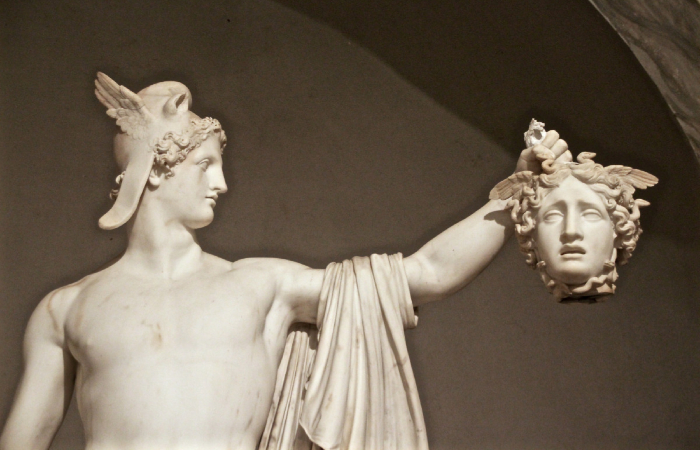Early life and formative years
Born on November 1, 1757, in Possagno, a village in the Venetian Republic, Antonio Canova hailed from a lineage of stonecutters and sculptors. After the early demise of his father, young Canova was raised by his grandfather, Pasino Canova, who introduced him to the art of sculpture. By the age of nine, Antonio had already demonstrated his talent by carving small marble shrines. His formal training began under Giuseppe Bernardi, also known as ‘Torretto’, and later continued with Giovanni Ferrari. Canova’s early works, such as Daedalus and Icarus (1777–79), showcased his budding skill and were instrumental in establishing his reputation.
Rise to prominence in Rome
In 1781, Canova moved to Rome, a pivotal decision that would shape his illustrious career. Immersed in the city’s rich artistic heritage, he studied ancient sculptures and absorbed the classical ideals of harmony and proportion. His breakthrough came with Theseus and the Minotaur (1782), a work that epitomized the Neoclassical aesthetic and garnered widespread acclaim. This success led to numerous commissions from European nobility, solidifying his status as the preeminent sculptor of his time.
Signature works and artistic style
Canova’s oeuvre is characterized by its graceful forms, serene expressions, and meticulous attention to detail. He masterfully captured the essence of classical antiquity while infusing his sculptures with a sense of lifelike vitality. Among his most celebrated works is Psyche Revived by Cupid’s Kiss (1787–93), which depicts the tender moment of awakening love. Another masterpiece, The Three Graces (1814–17), showcases his ability to convey elegance and unity through the intertwined figures of the mythological sisters.
Patronage and influence
Canova’s reputation attracted the patronage of influential figures, including Napoleon Bonaparte, for whom he created several sculptures, such as Napoleon as Mars the Peacemaker. His works were sought after by European courts, and he was appointed as the Inspector-General of Antiquities and Fine Arts for the Papal States. In this role, he was instrumental in preserving and restoring artworks looted during the Napoleonic wars.
Legacy and enduring impact
Antonio Canova passed away on October 13, 1822, in Venice, leaving behind a legacy that profoundly influenced the trajectory of Western sculpture. His commitment to classical ideals and his innovative techniques set new standards in the art world. Canova’s works continue to be celebrated for their beauty and craftsmanship, embodying the pinnacle of the Italian Neoclassical Revival.In summary, Antonio Canova stands as the leading figure of the Italian Neoclassical Revival, whose sculptures seamlessly blend classical inspiration with unparalleled artistry.
